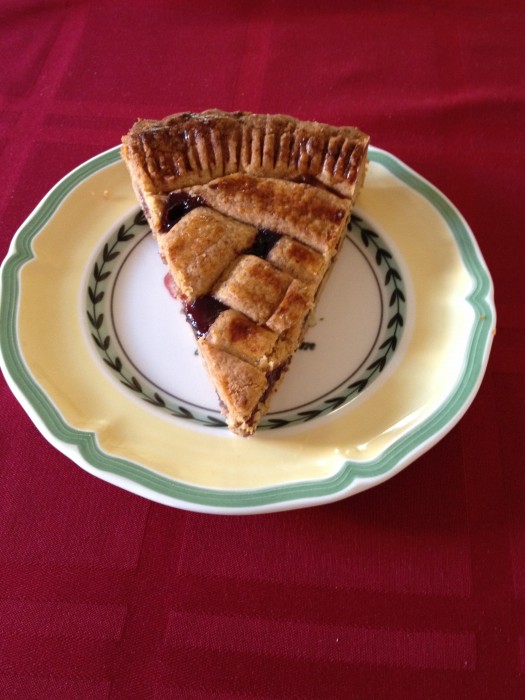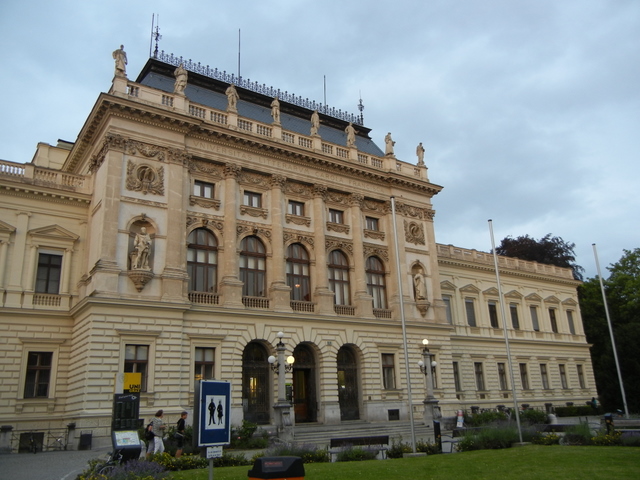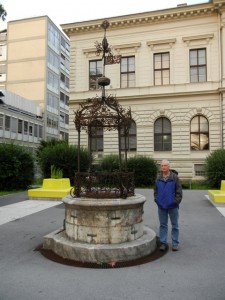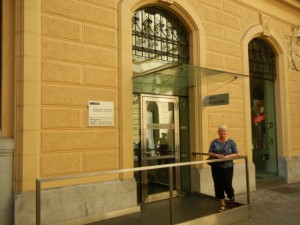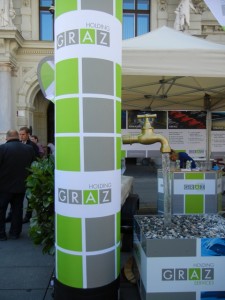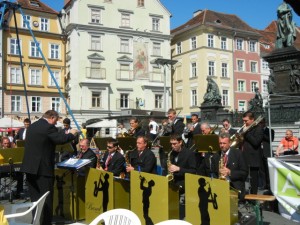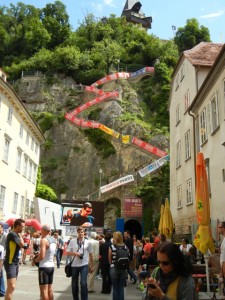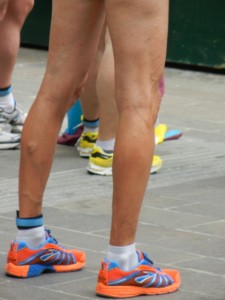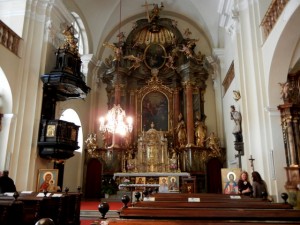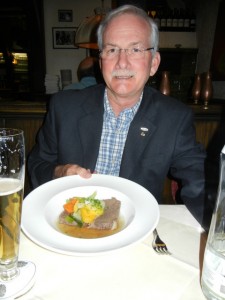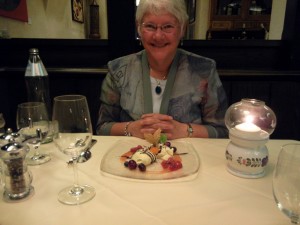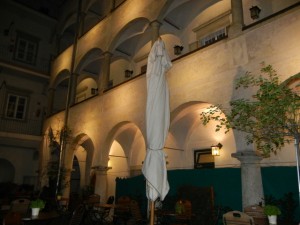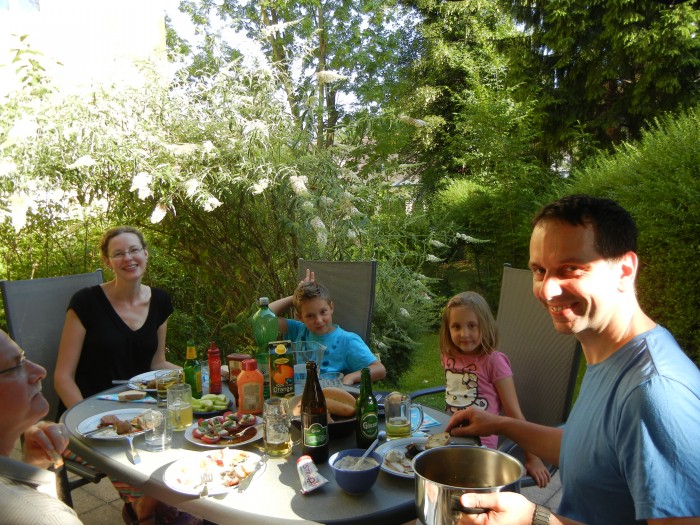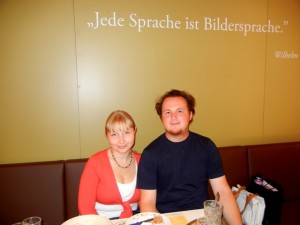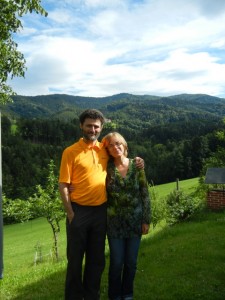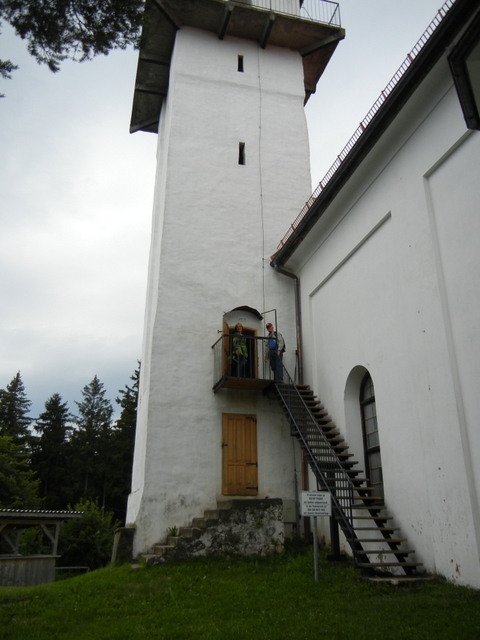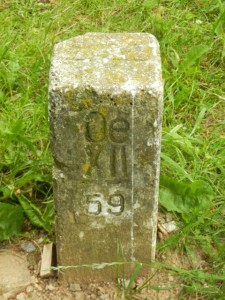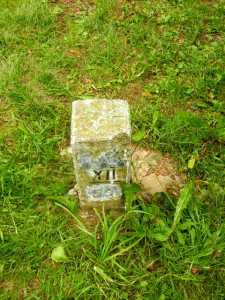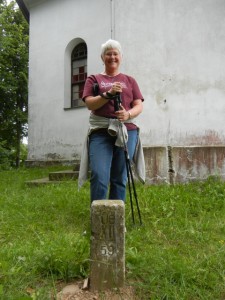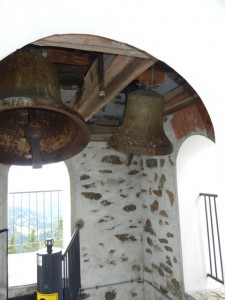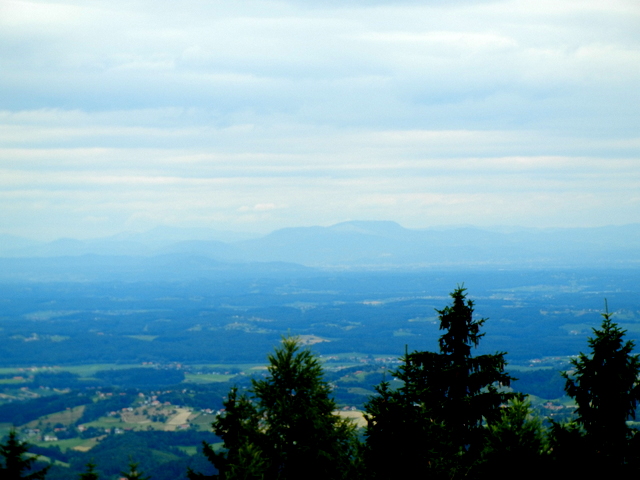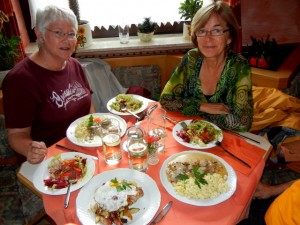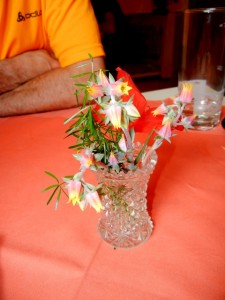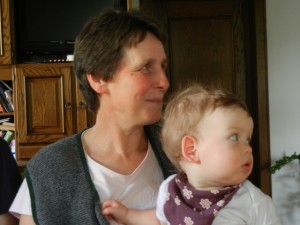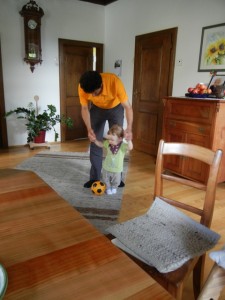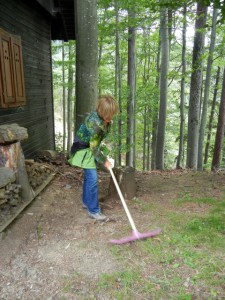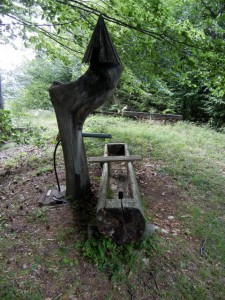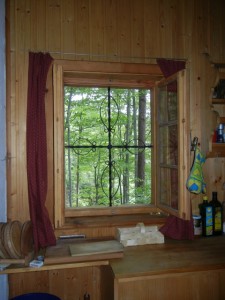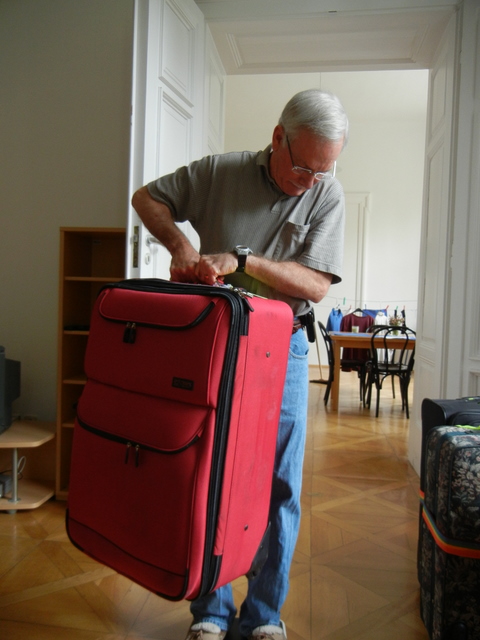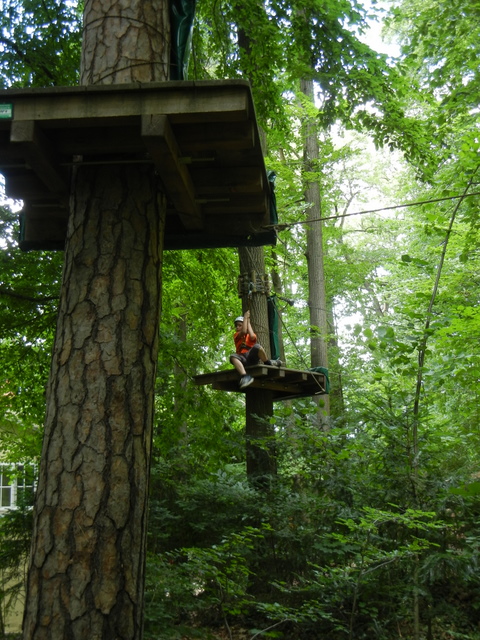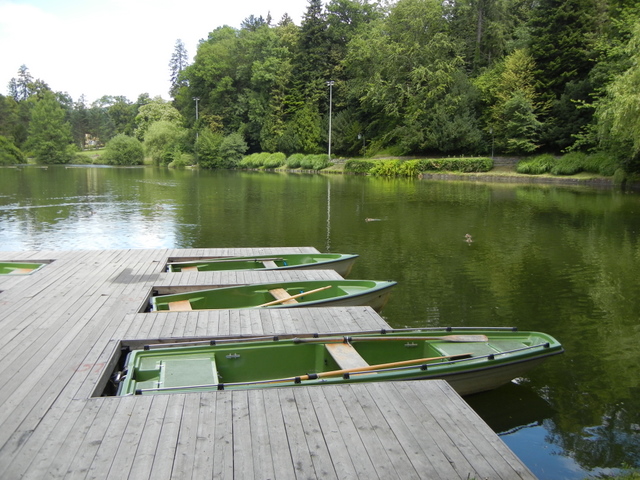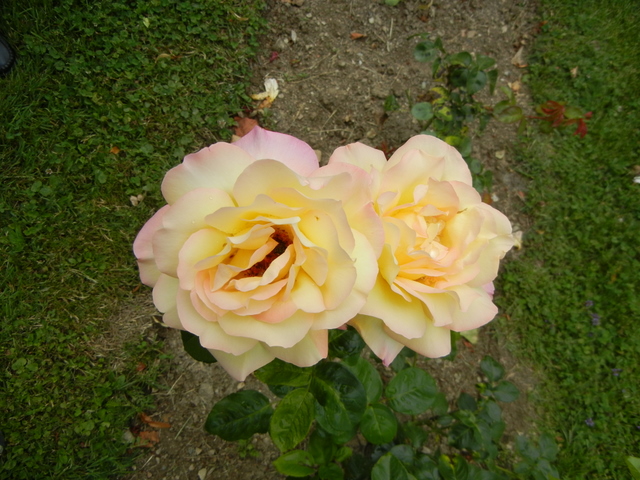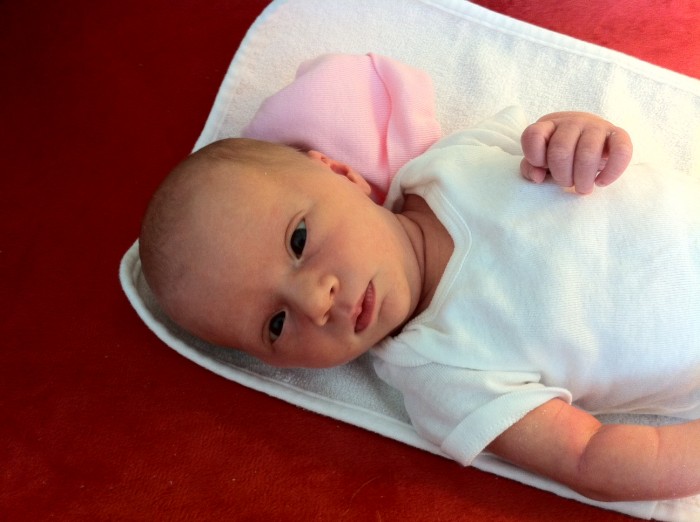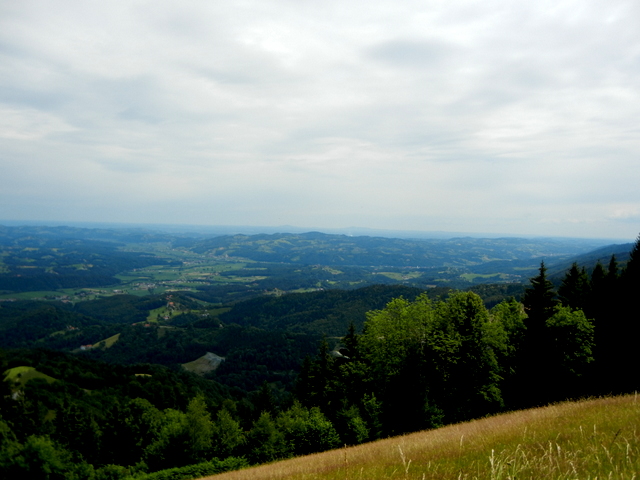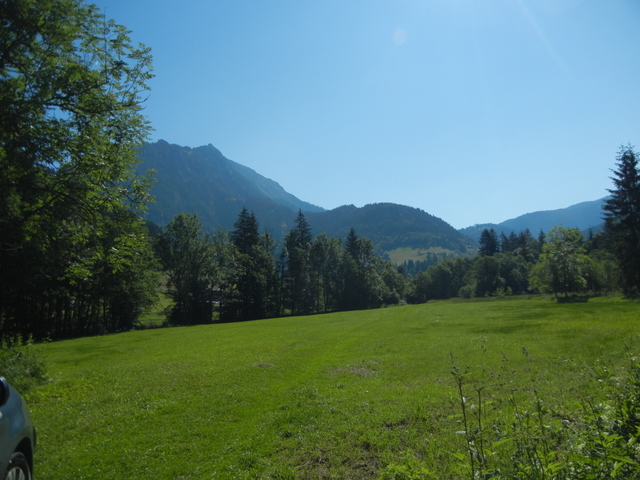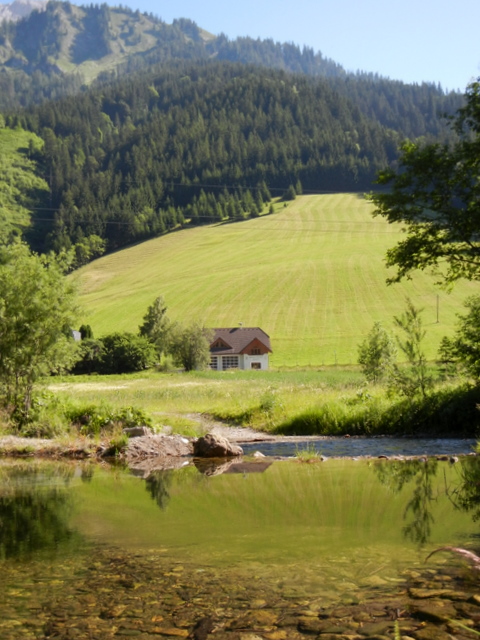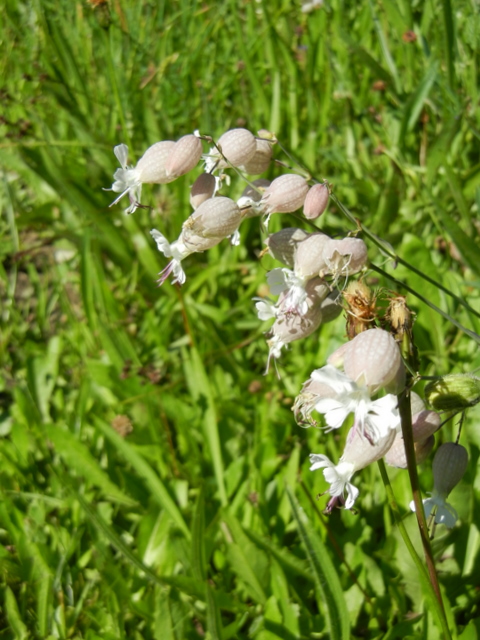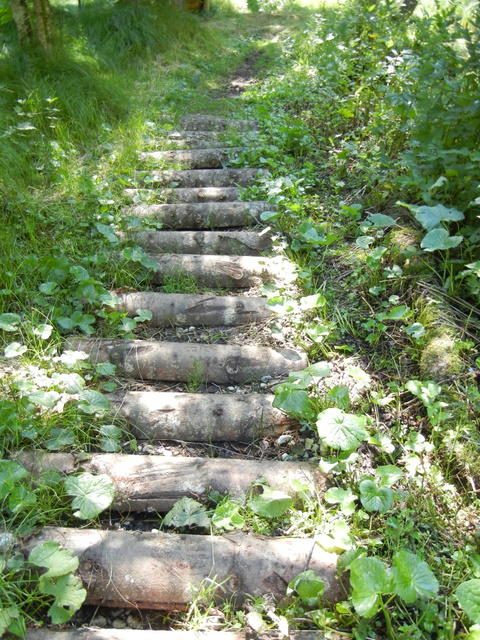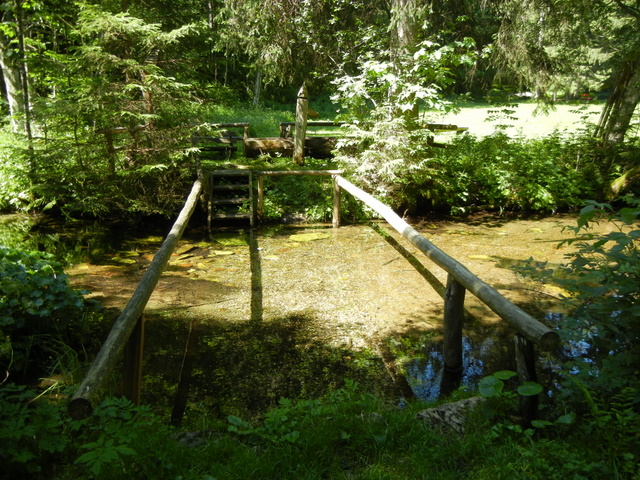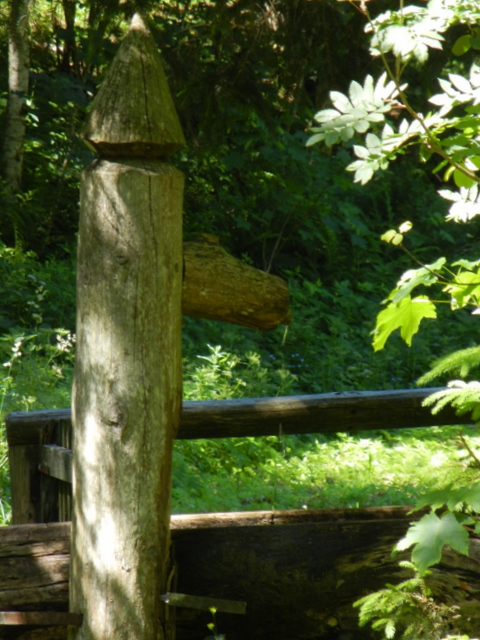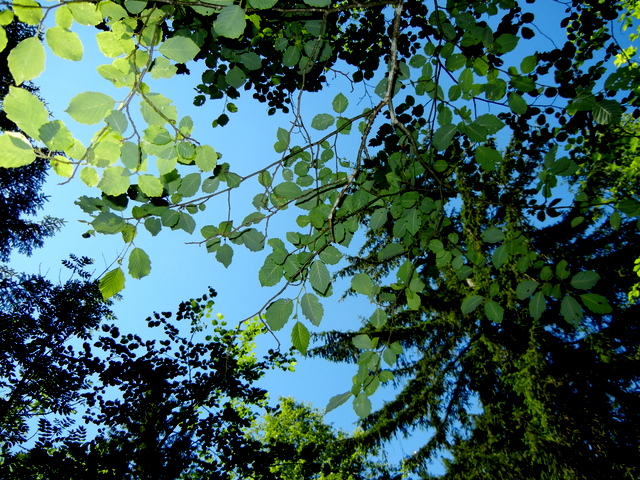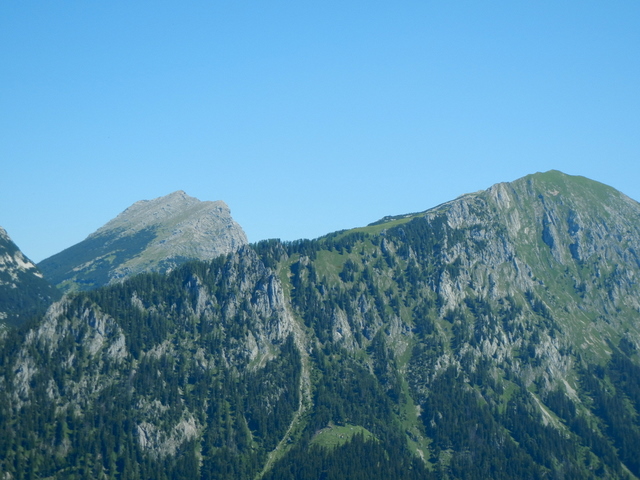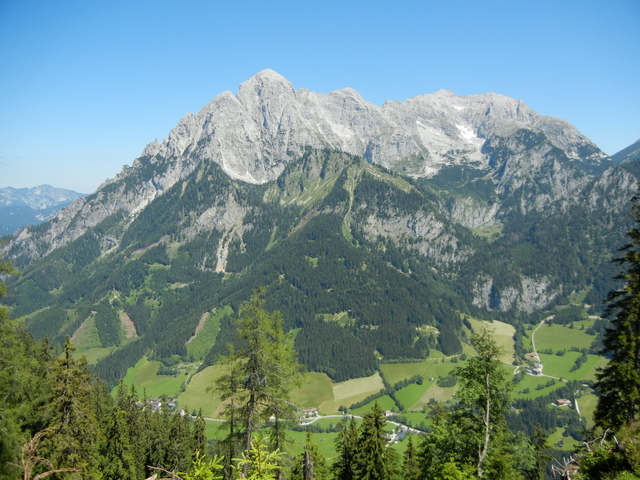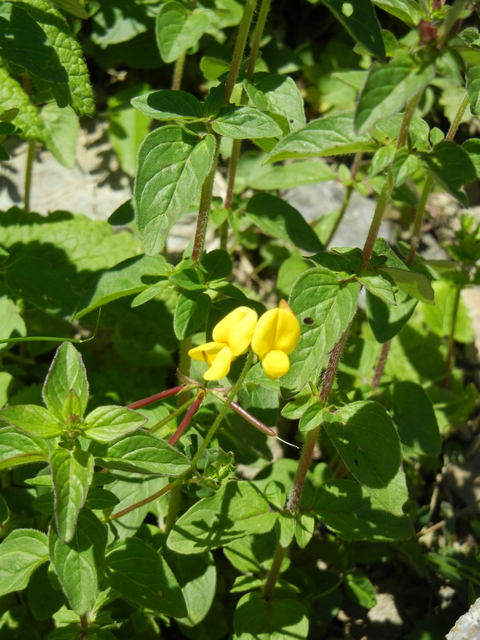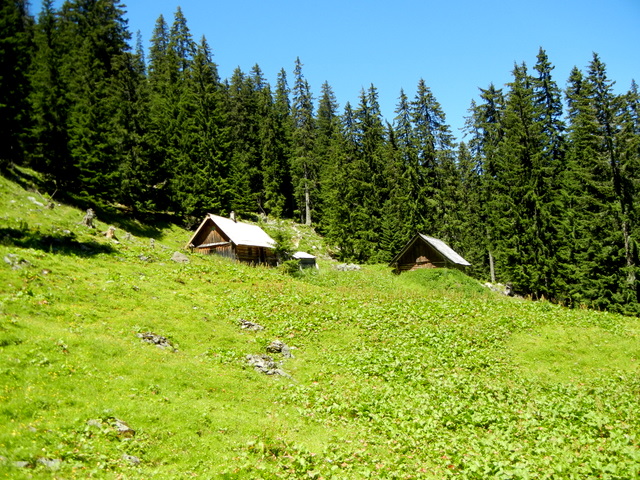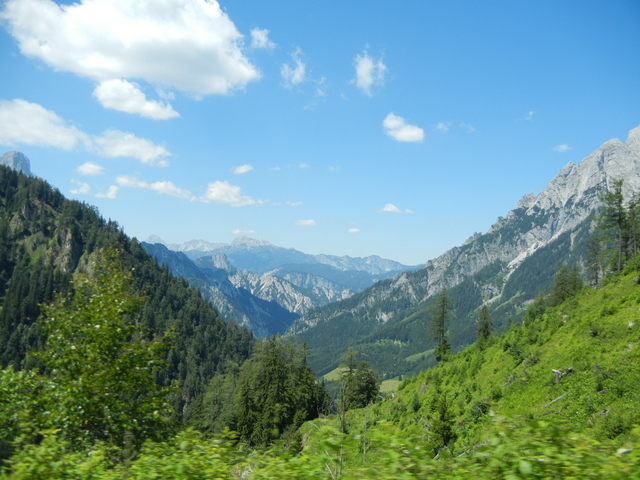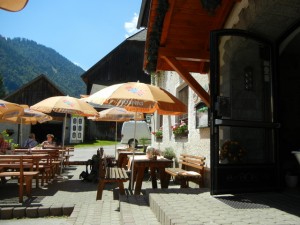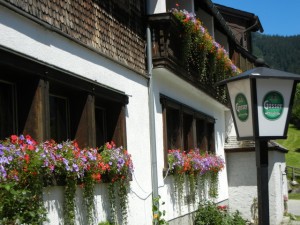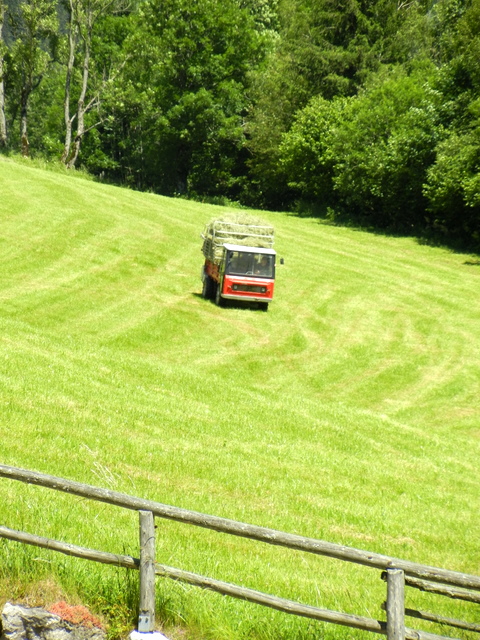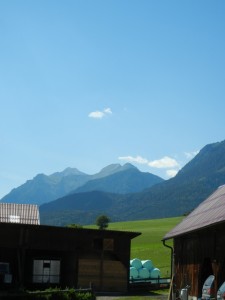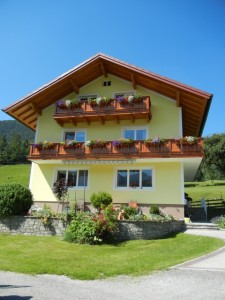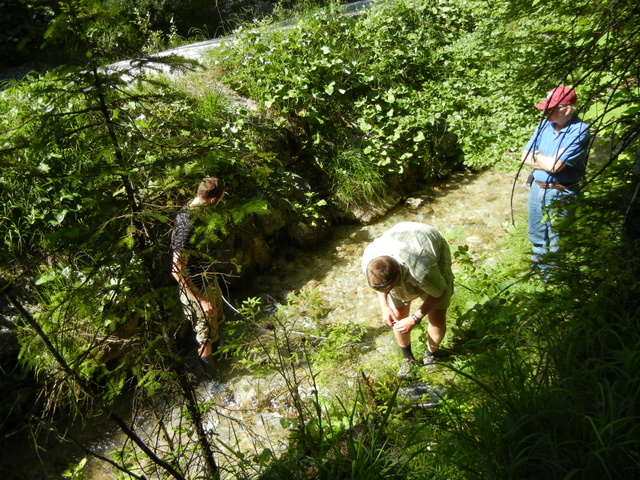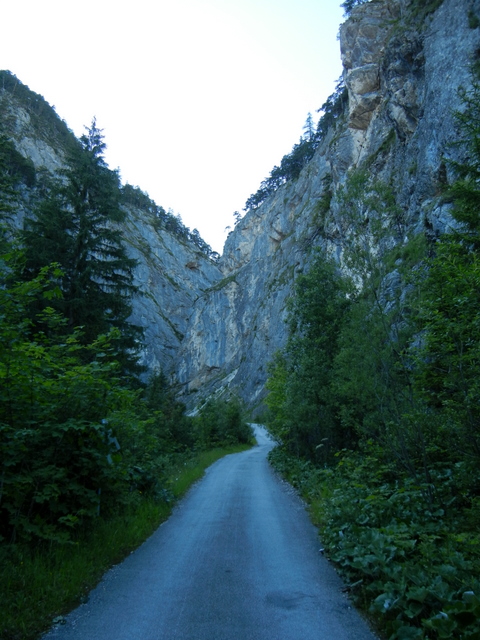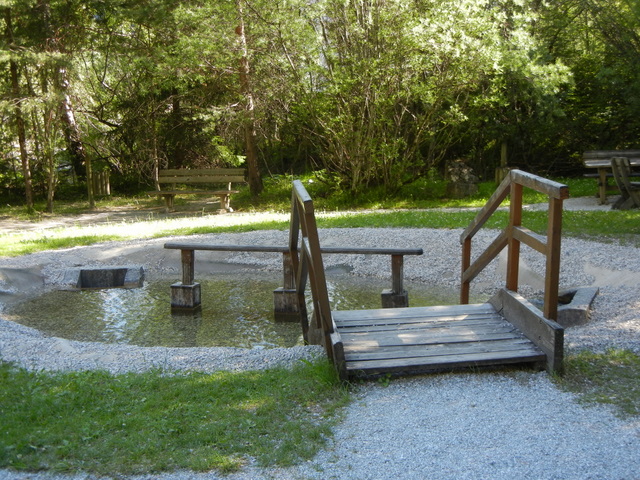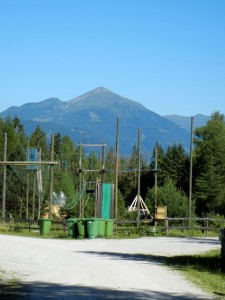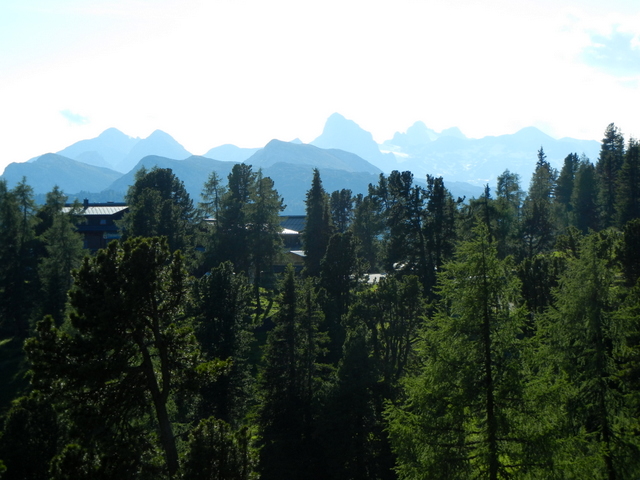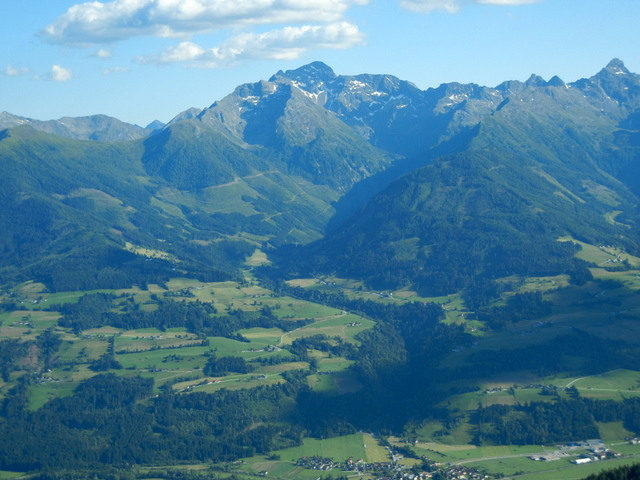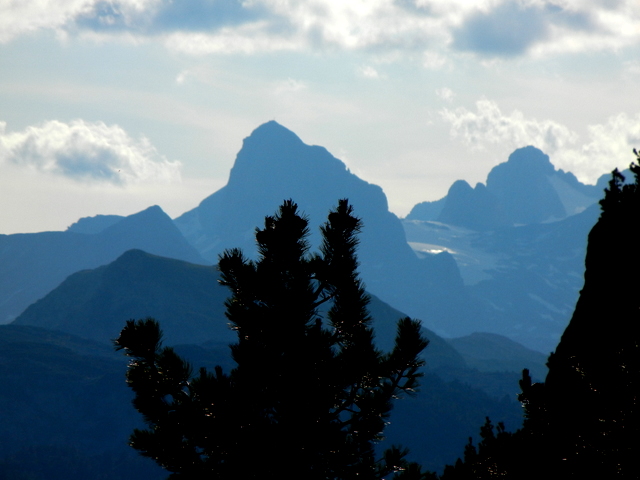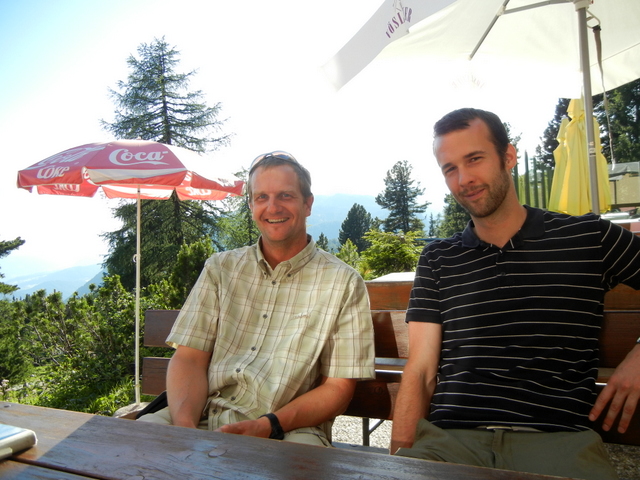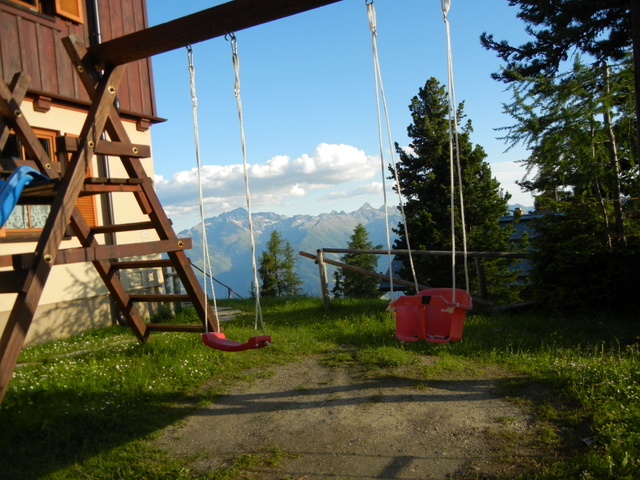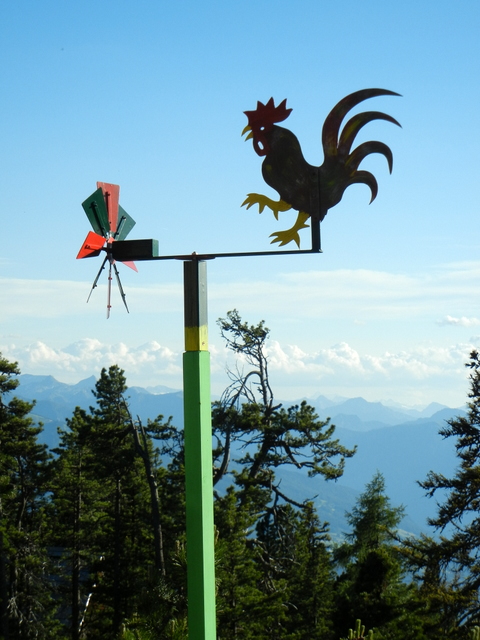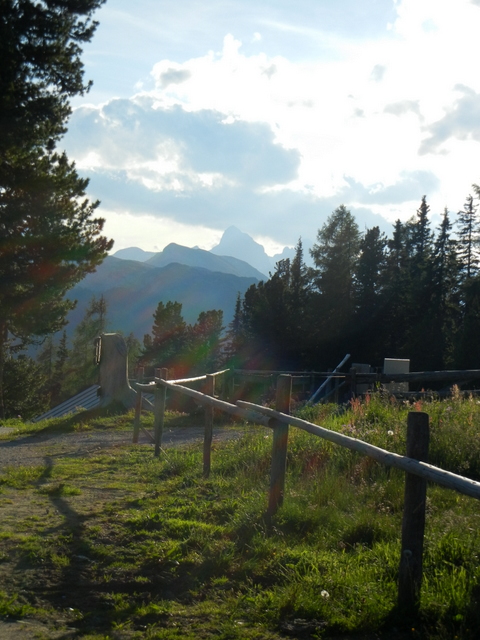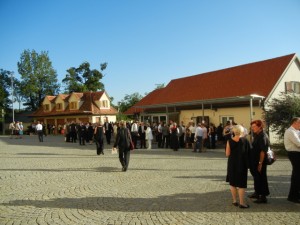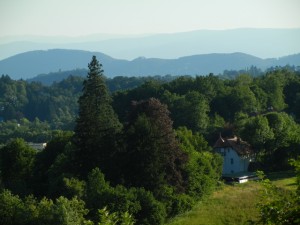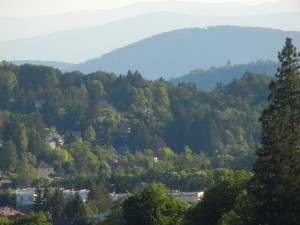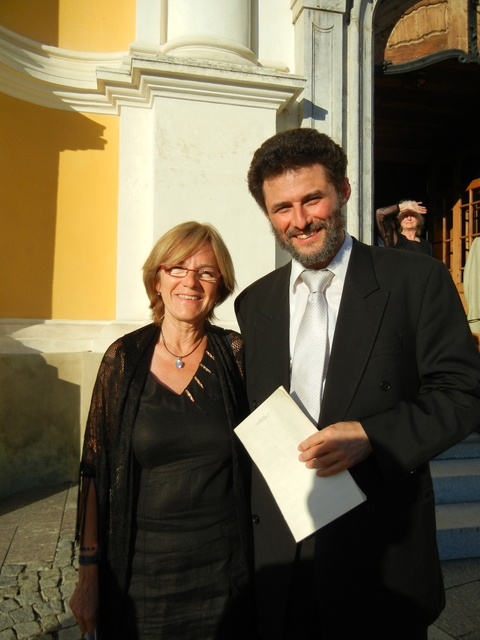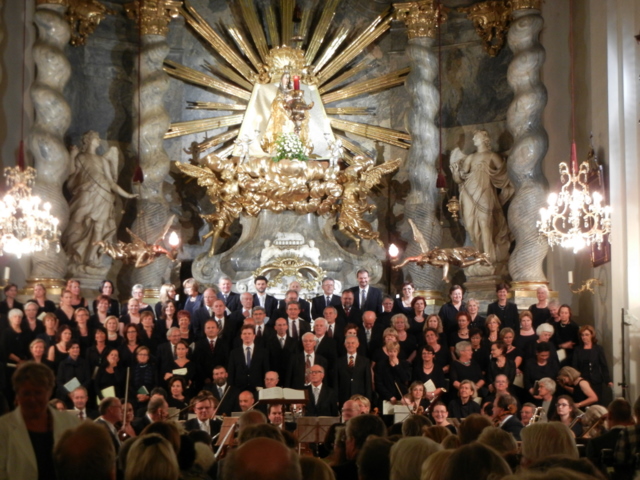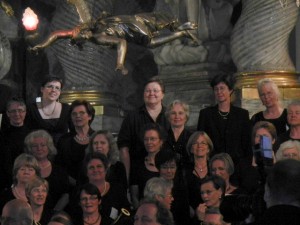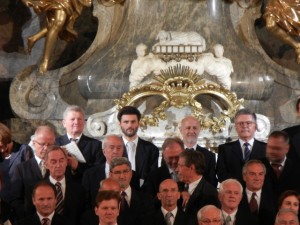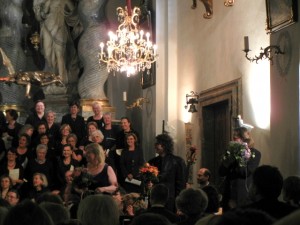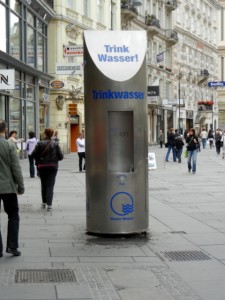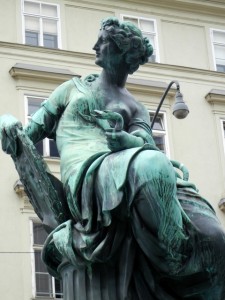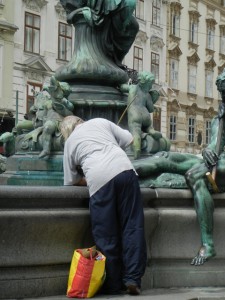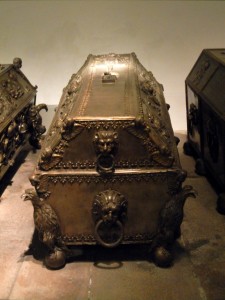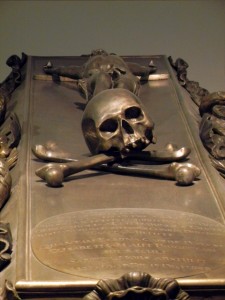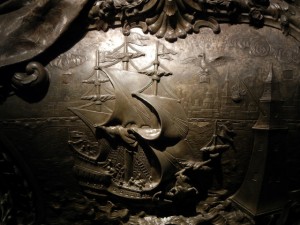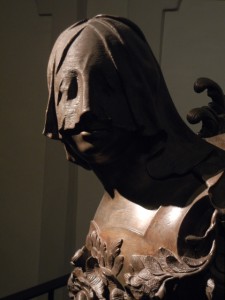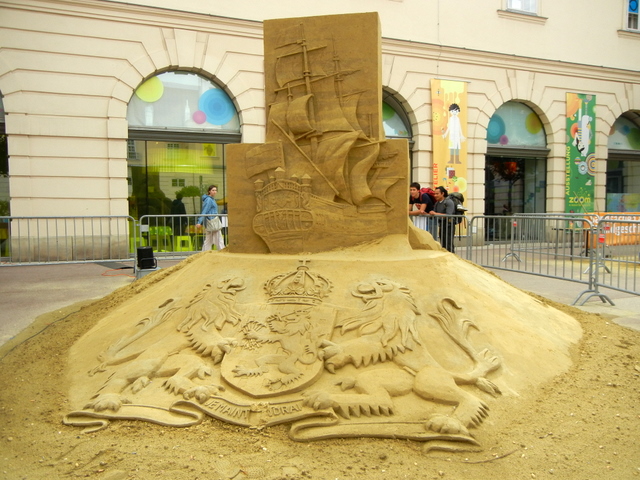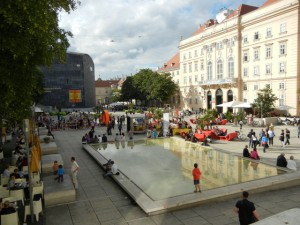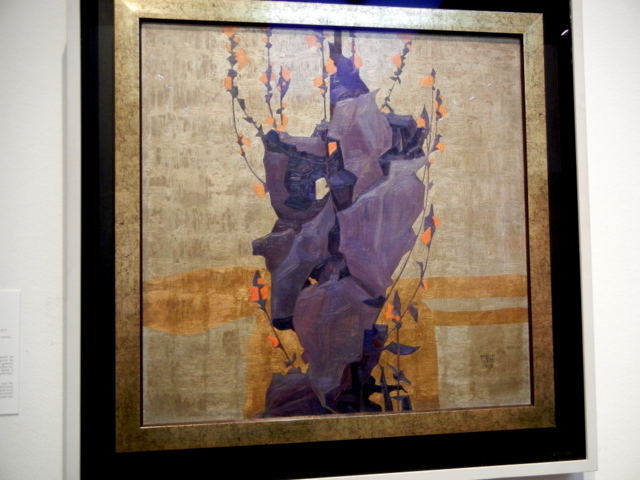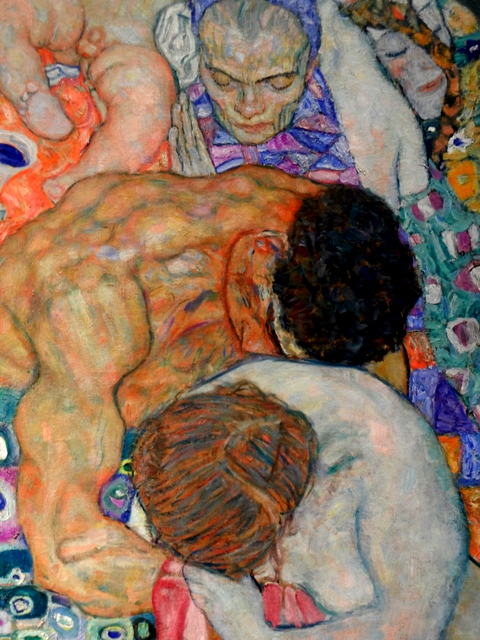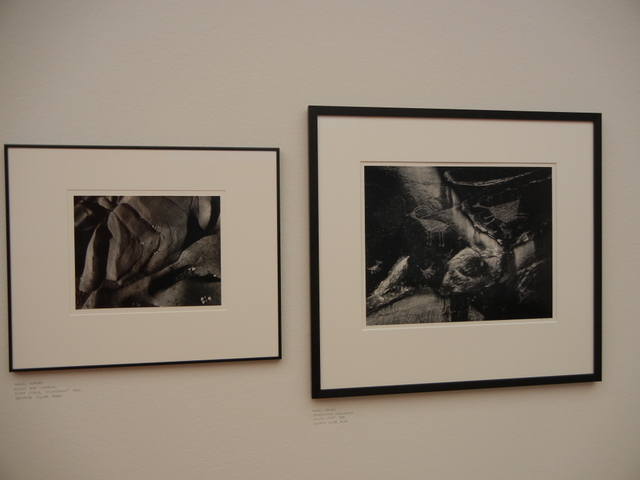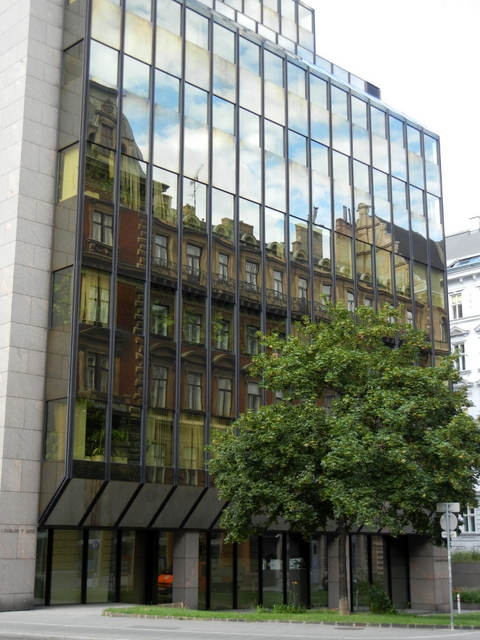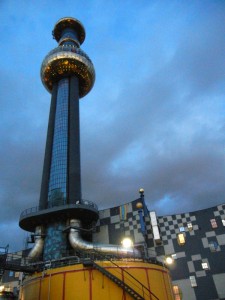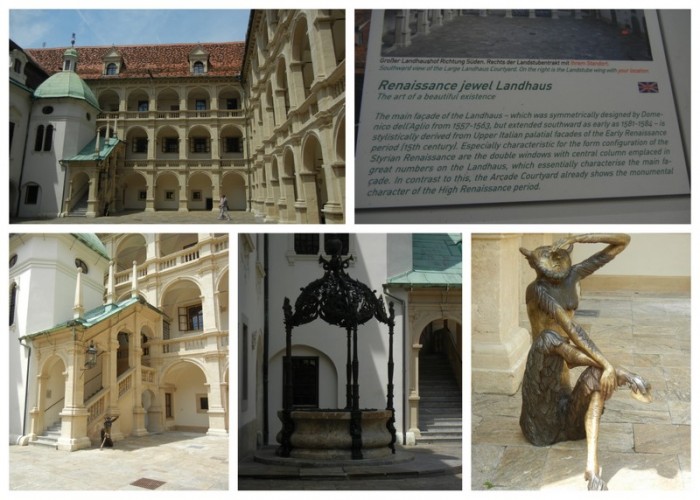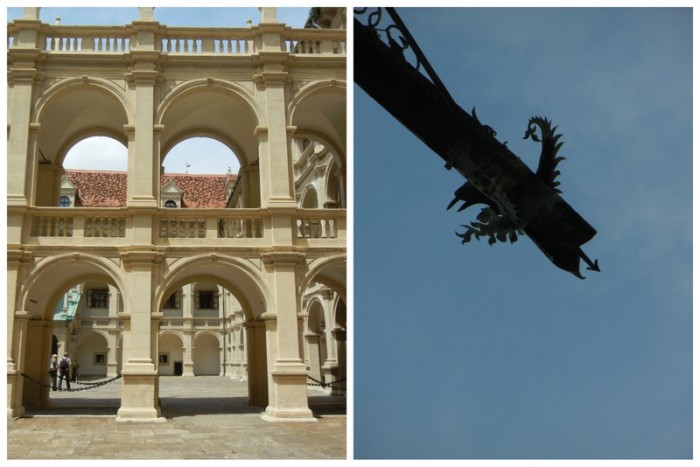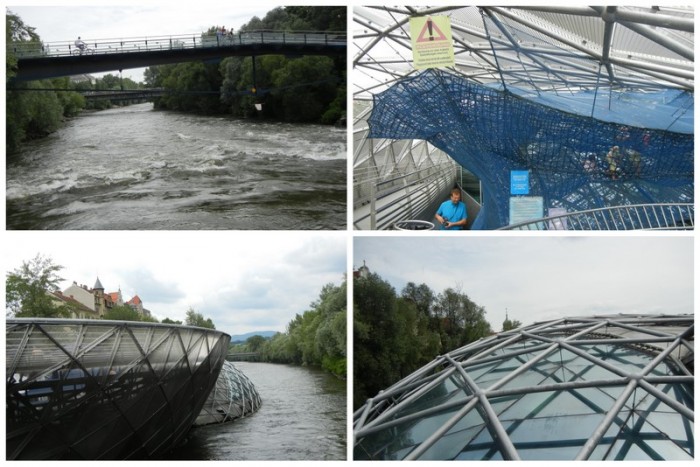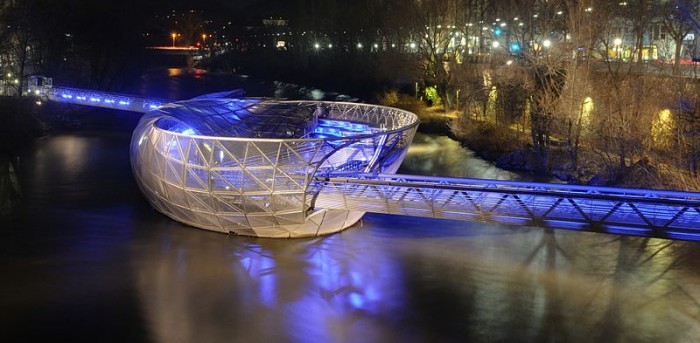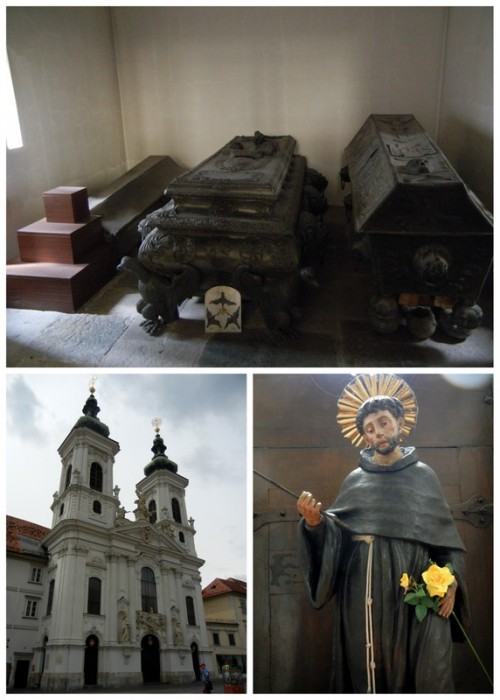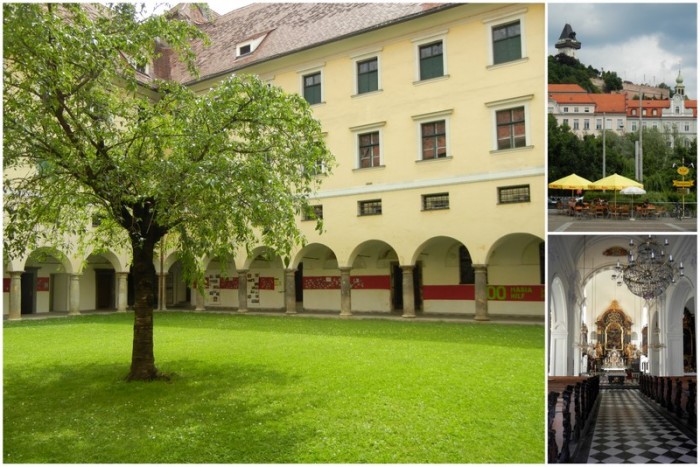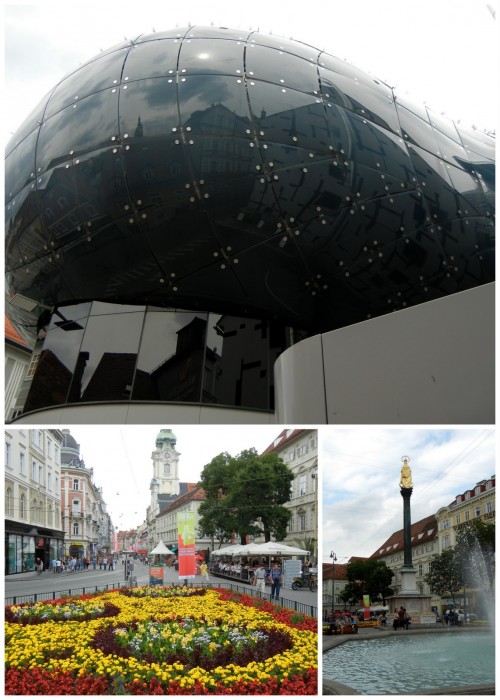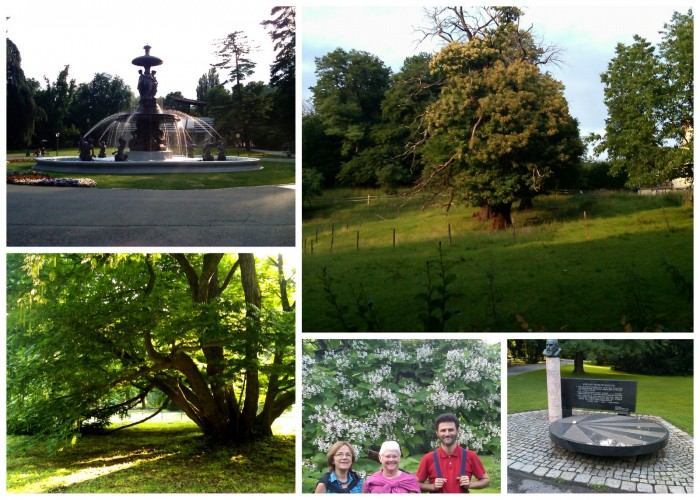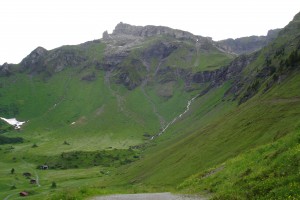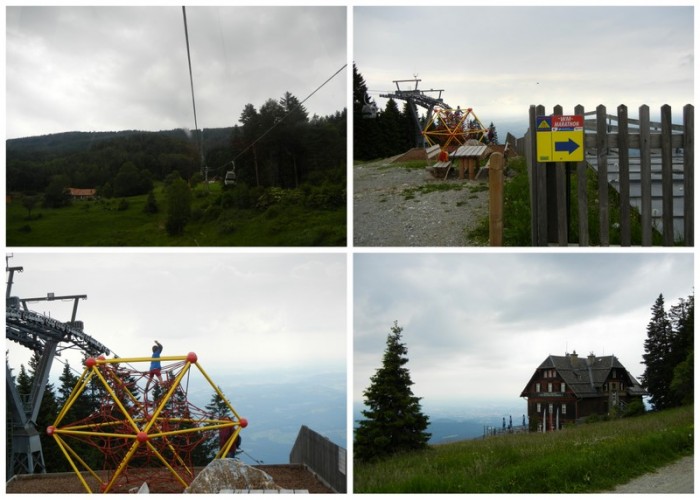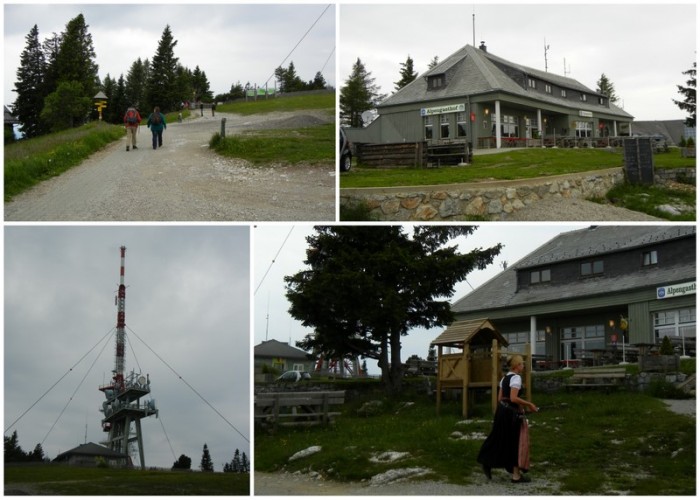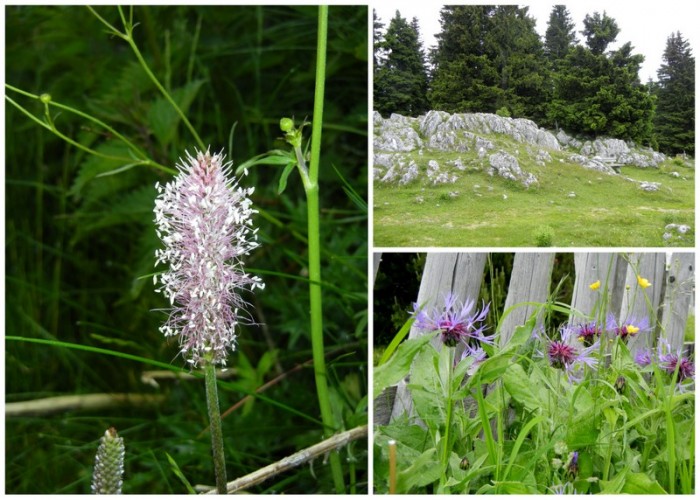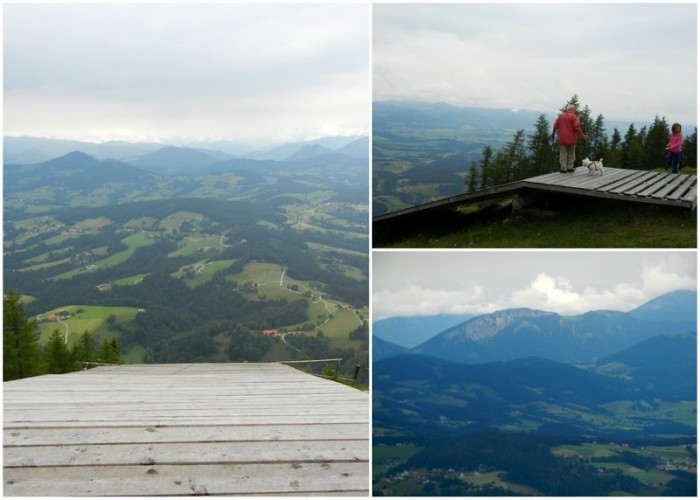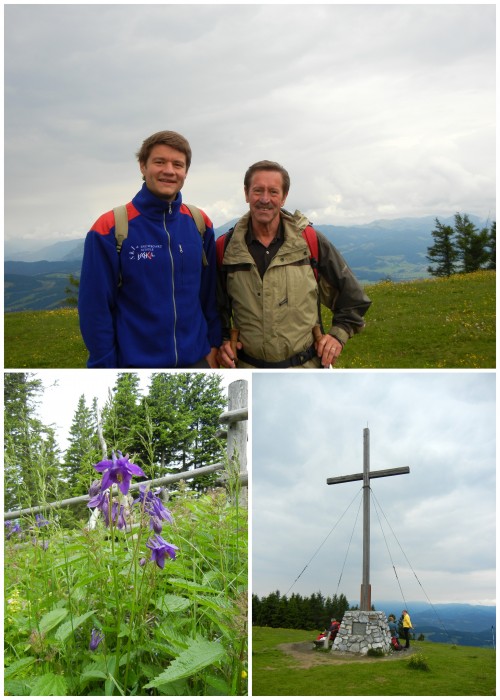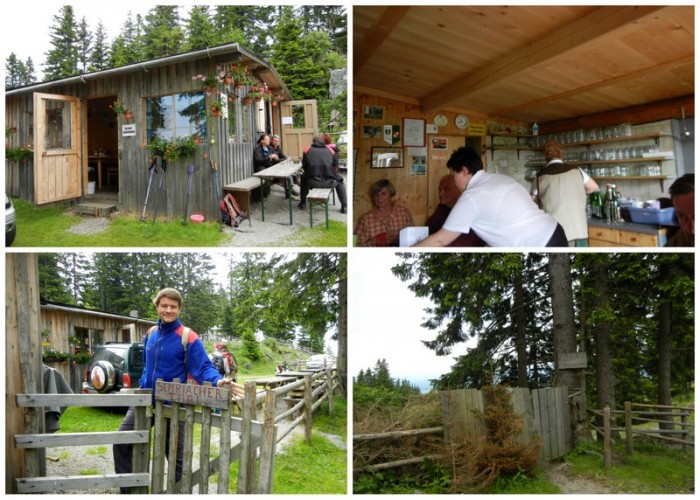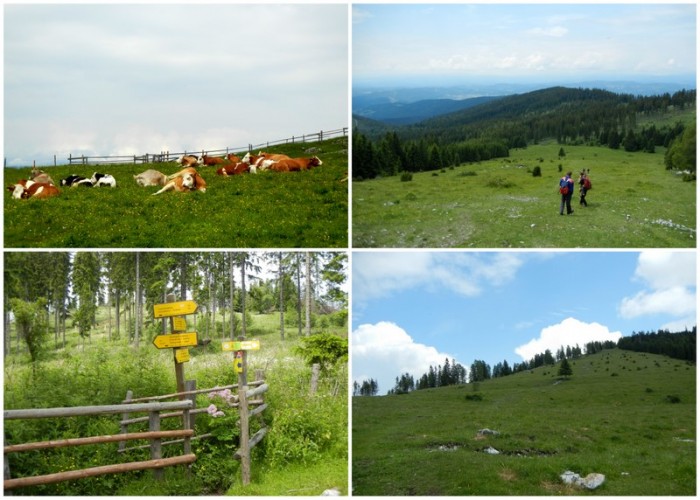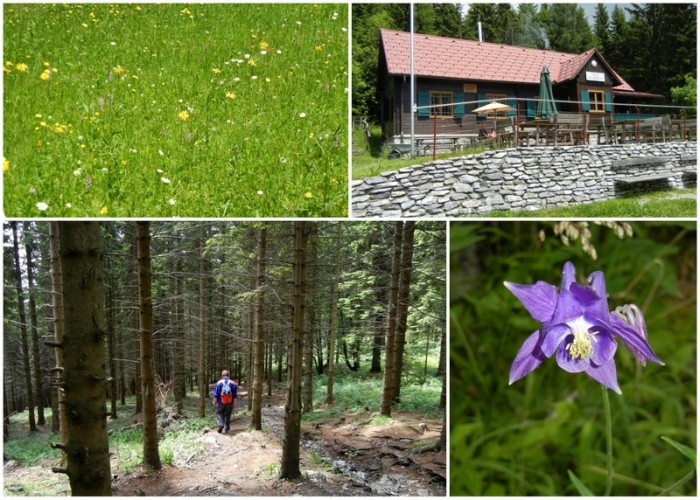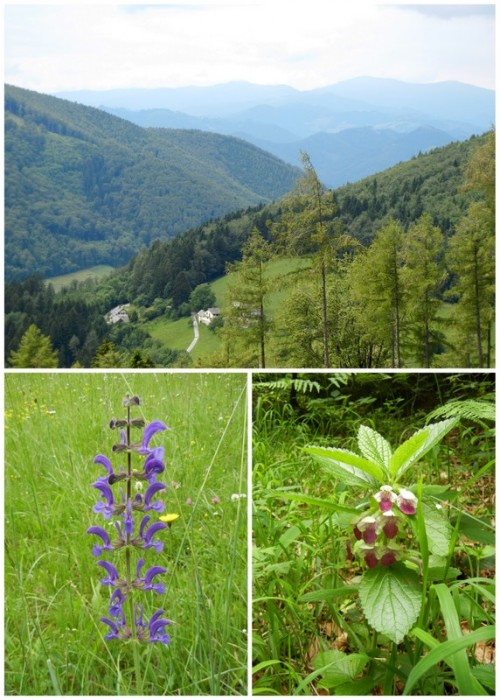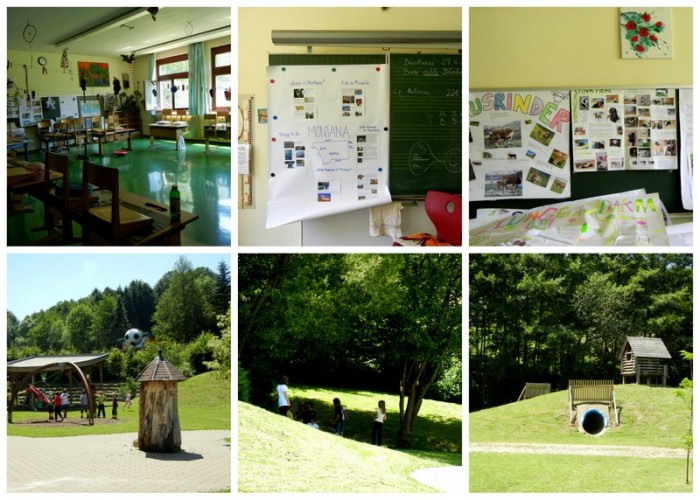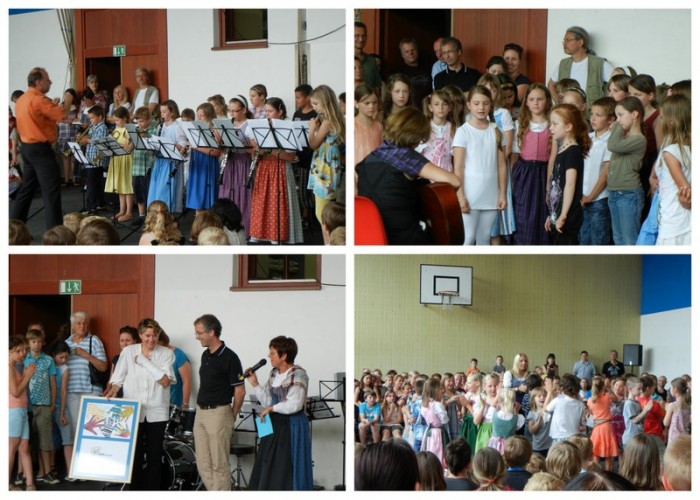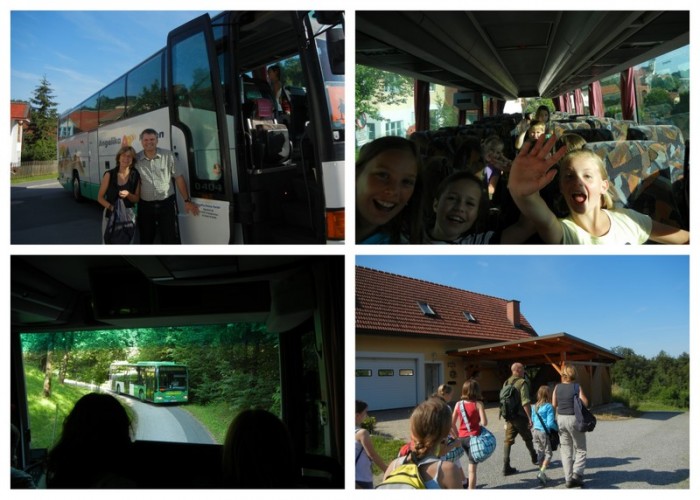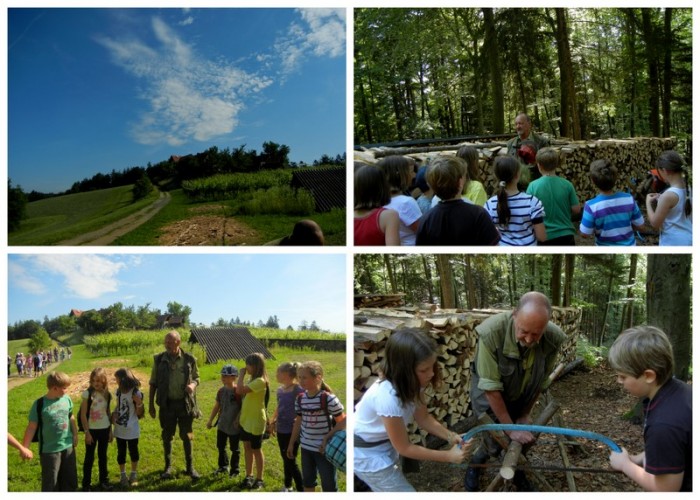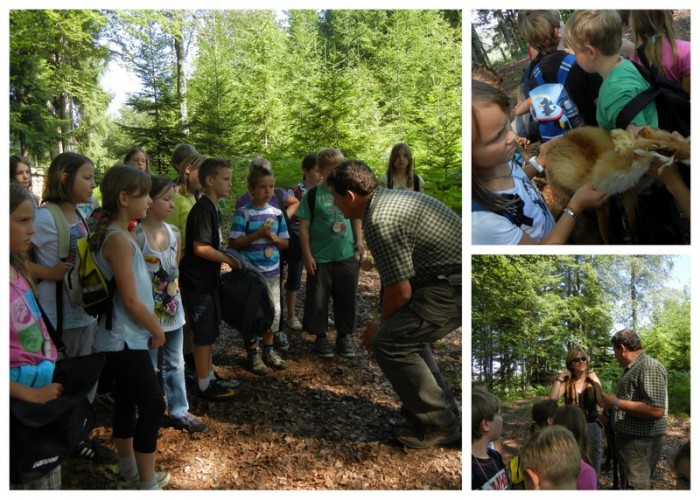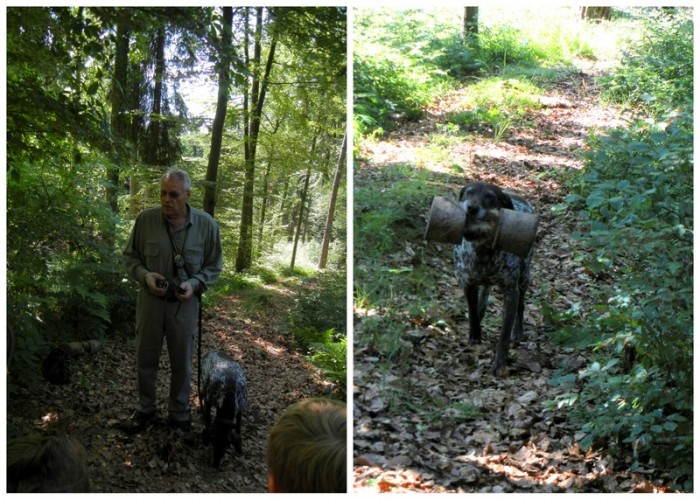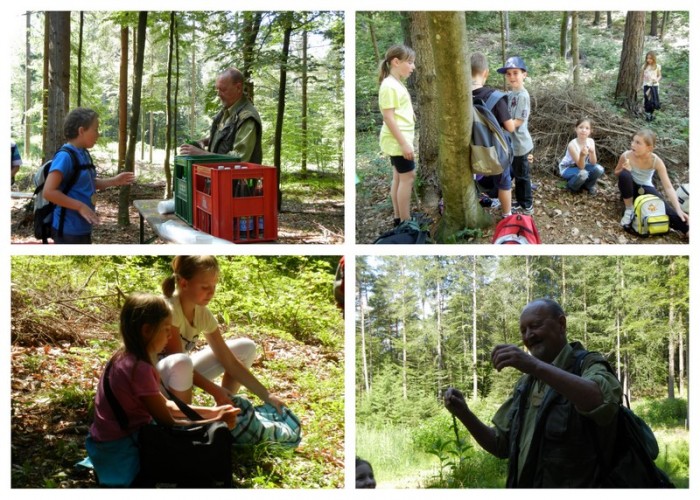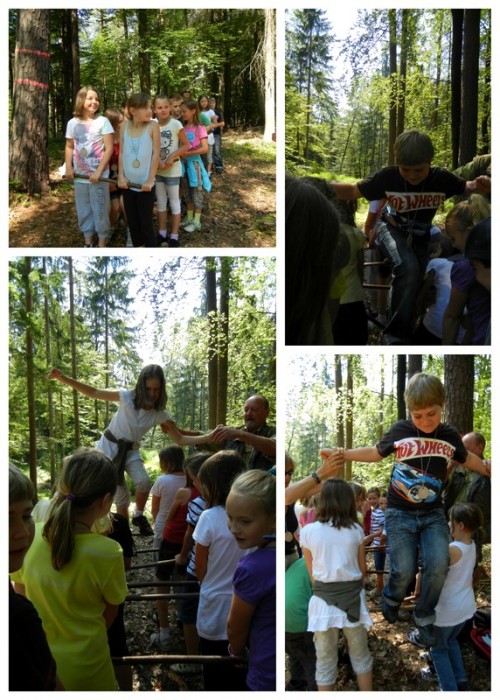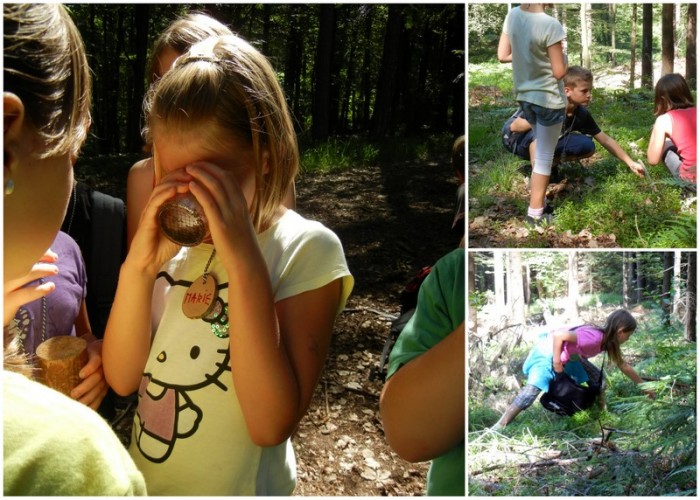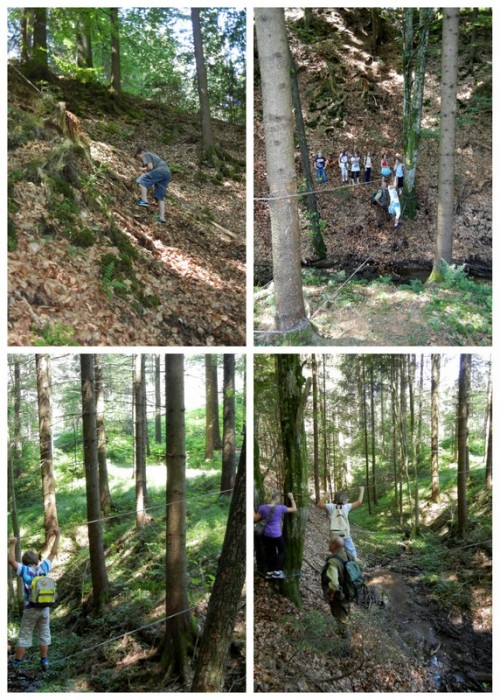(note: it is possible to see photos in larger format by clicking once on them and then clicking again.)
After consulting wetter.com, we picked Saturday, June 25, as the better day to head up river on the Danau (Danube) to explore the Wachau Valley in Lower Austria. It’s famous for the production of Grüner Veltliner and Riesling wines as well as scenic beauty. Our plan was to catch the train in Vienna through St. Polten, where we changed trains, and then on to Melk. From Melk we would ride the boat up river to Dürnstein, and then take the boat back down the river to Krems, where we would get the train back to Vienna. Sounds easy, right?
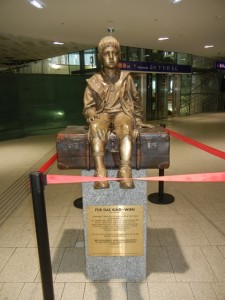
memorial (to children of Holocaust) statue in West Bahnhof on way to Melk
Mostly it was. The train station agent wasn’t sure if we could use the KOMBI ticket on either day (our choice of Saturday or Sunday, depending on the weather). We could (up to 10 days after purchase) and she finally found the information that confirmed this. The train ride to Melk was fascinating….loaded with bikers and their bikes. The ride up and down this route along the Danau is gorgeous and not too much of a strain. We’ve never seen so many helmets assembled at one time!

bikers disembarking at Melk and this was just a fraction!
Melk is famous for the Abbey at Melk, a Benedictine monastery that dates from the 11th century. Melk was first built as a fort, then a castle for Austria’s Babenberg rulers in the 10th Century. Sitting atop a hill, the location was an ideal spot for trade, to watch for approaching enemies and/or to admire the sheer beauty of the Danube River and the surrounding countryside. In 1089, Leopold II, a member of the Babenberg family who had become unhappy with the town’s reigning clergy, transferred Melk to Benedictine monks. They converted it into an abbey which is now recognized as one of the finest in the world.
It has since undergone many challenges (fire in 1297, Turkish Wars in the early 1500’s, occupation by Napolen’s and Hitler’s troops) and reconstructions. The current construction in the baroque style dates from 1711, with a more modern 12-year renovation completed in 1995, financed in part by the sale of the abbey’s Gutenberg Bible to Harvard!!! The Abbey houses a superb gymnasium (high school) of which our tour guide was a graduate! The old imperial residences are part of the tour, as is a well-done museum, and the world renowned library. Formal and informal gardens surround the buildings. It’s also home to a community of monks, although at least half of them live outside the cloister, doing their work. (This is typical for Benedictine orders.) The monastery is supported by the agriculture from the lands it owns and tourism. The town of Melk is beautiful as well, with old streets, and quaint shops. We ate lunch there before continuing on.
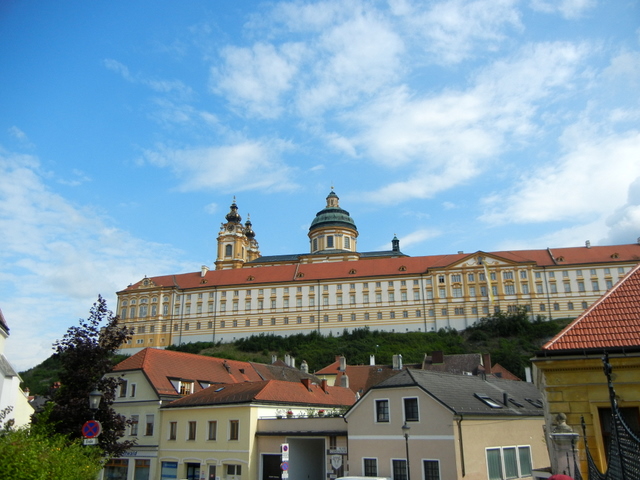
The Melk Stift (Abbey)
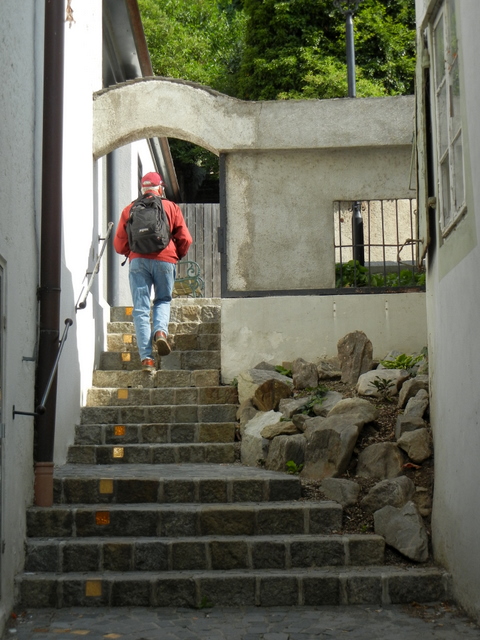
follow the yellow brick road (gold for Abbey, blue for Danau)
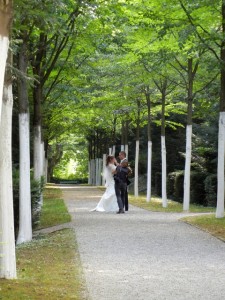
wedding shots in the garden of the abbey
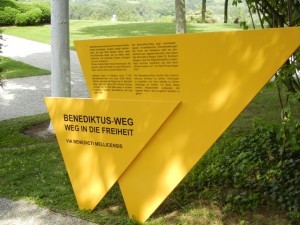
Benedict's Way - a side path in the garten. This was accompanied by piped in choral music!
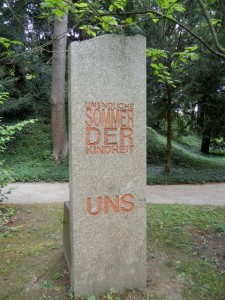
part of a series of monuments: Uns ist in Paradies
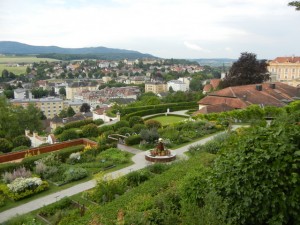
herb and vegetable gardens at Abbey Melk
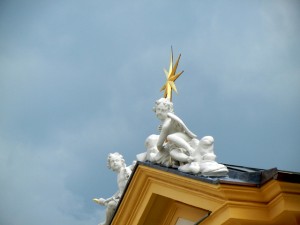
top of the gate to the Abbey
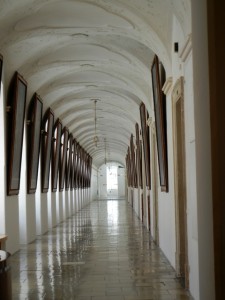
Imperial hallway, now part of the Abbey Museum
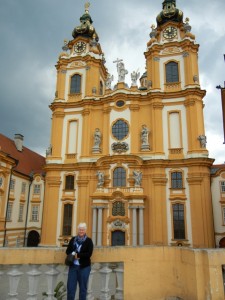
front of the Abbey
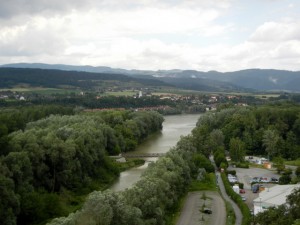
looking out on the Danau Valley from the Abbey
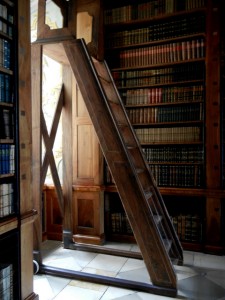
ladder and bookcases in Abbey library-home to 100,000 volumes (ancient and new)
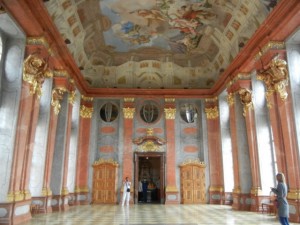
the marble hall
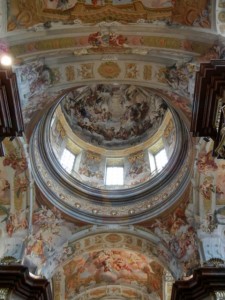
ceiling frescos of the Melk stift
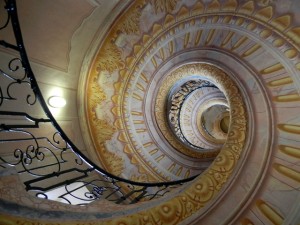
stairs up.down with mirror
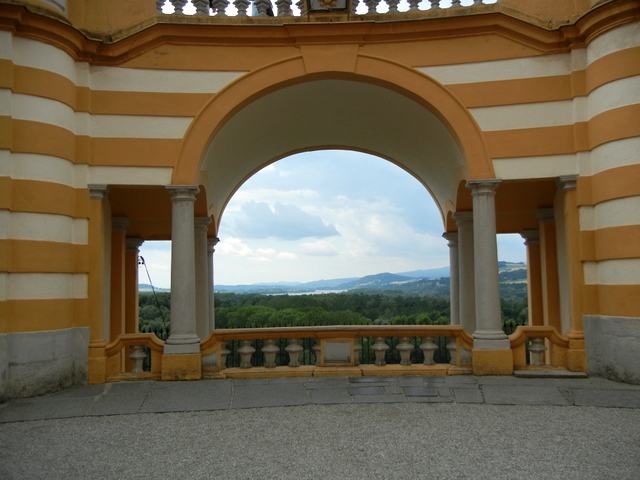
the view from St. Coloman Courtyard - named for an Irish prince martyred near Vienna in 1082. He's buried now at Melk.
After several attempts, we found the DDSG Blue Danube Prinz Eugen (remember Prince Eugeny of Saxony, from the earlier post about Vienna?). It was necessary to exchange our KOMBI receipt for an actual ticket onto the boat, a fact no one told us. We could recommend that they label the ticket offices, as really, there are at least two other boat companies! We stepped aboard and they pulled up the gangplank! Couldn’t believe we were the last ones on, but we are so glad they waited for us!
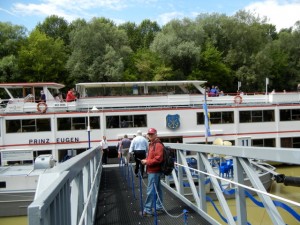
last ones on!
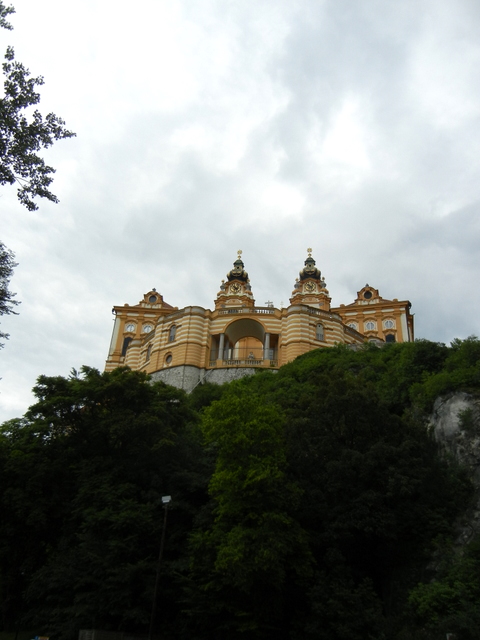
the Melk Abbey from the boat
The ride up the Danau (I am sorry Johann Strauss II, nowhere did we see blue water – that must be for the headwaters or perhaps this is the high water time!) is breathtakingly picturesque. We have decided we really like the relaxing ride via boat. (who knew? maybe a cruise is in our future!) More quaint towns and castles drifted by (notably Willendorf), along with a ready-to-go bonfire with scarecrow(?) hanging over it. We haven’t been able to figure that one out. Usually there are big bonfires on Summer Solstice, but we were way past that! We could see bikers along the route as well as residents having fun! We dodged rain storms all the way up. (so much for wetter.com or as Bill says, it’s a forecast!)
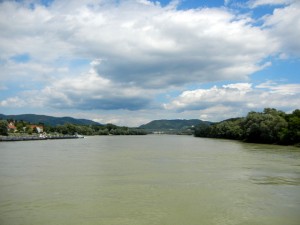
The Danau-decidedly not blue!
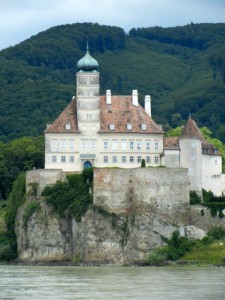
castle at Willendorf
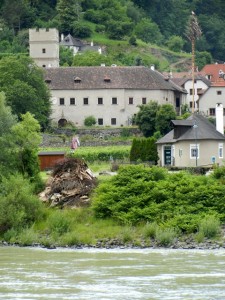
ready bonfire with effigy and maipole
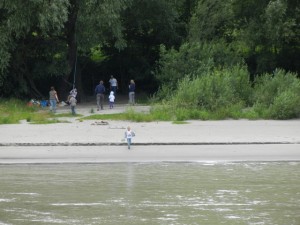
families enjoying the river - including a ropeswing
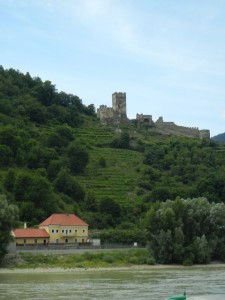
another castle on a steeply terraced vineyard hillside
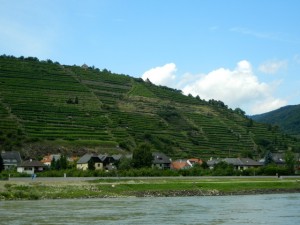
and more vineyards
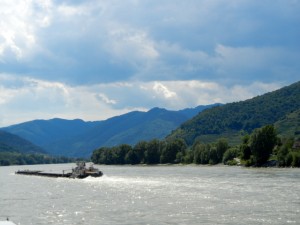
the Danau is used for tourism and commercial barge travel as well
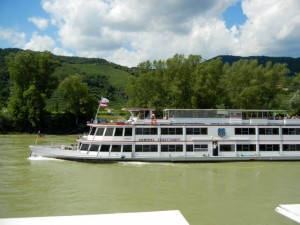
Now, there's a name we recognized-Admiral Tegettoff
The next stop was Dürnstein, home to a castle which imprisoned Richard the Lion-Hearted in 1193. While the weather was partially sunny (and hot) we hiked up to the ruined castle—warning, short legged people beware or make use of the rack beforehand—and down by a dirt road. The region invites rock climbers and we could see those brave adventurers, as well as great views, from our perch. I am not sure how they do it without getting blown off the face of the earth! It was very windy at the top!
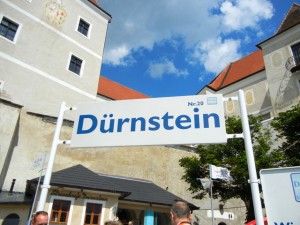
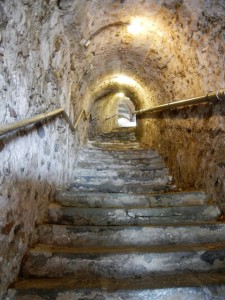
this way up!
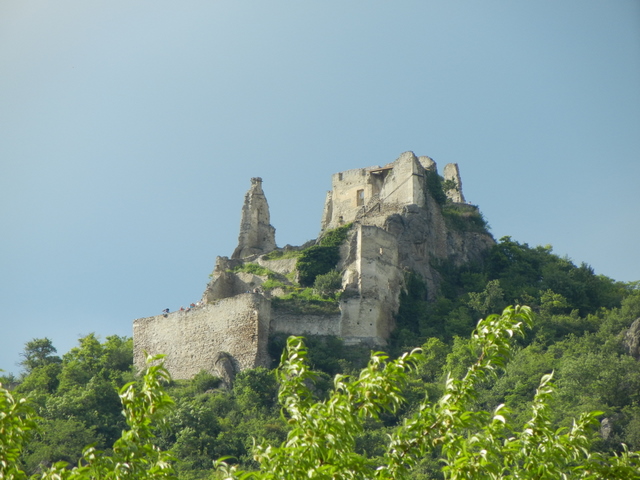
where we are going
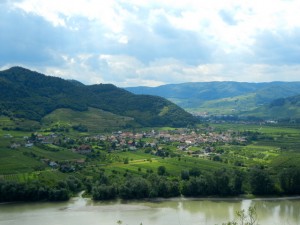
great views but we aren't there yet!
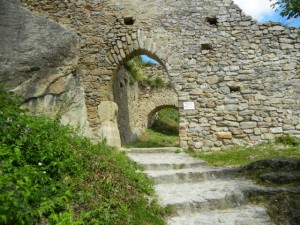
still not there
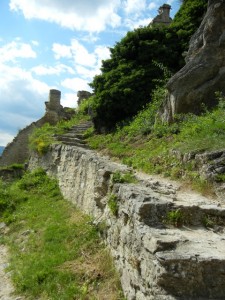
this was--er--the path
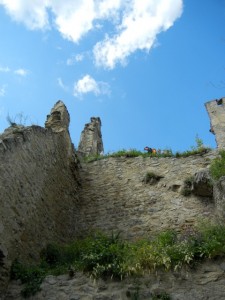
the top
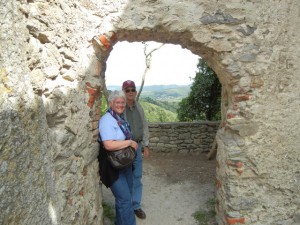
stop on the way down
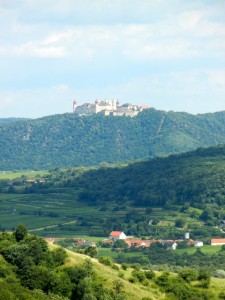
through the archway we spy.....another Abbey!
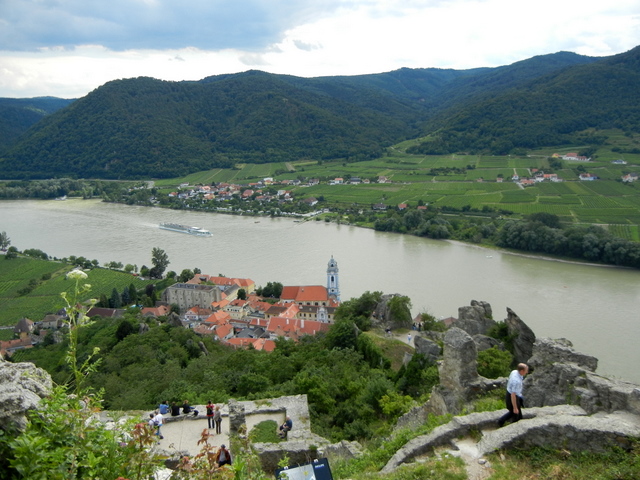
looking down on Durnstein
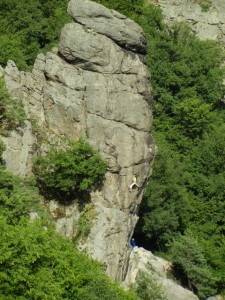
and people rock climbing
We met a couple from California on the boat, and together we hiked down from the castle and visited a gracious and hospitable wine-producer. He invited us for tastes (tastes here meant full-fledged pours of wine). After glasses of two different wines, learning he was a retired school principal with a new kidney, a tour of his production equipment, and a sampling of his schnapps, we stumbled made our way down past his vineyards (all picking is done by hand due to the steep terraces) through the little shops lining the pedestrian-only street of Dürnstein and then realized it was probably time to go! Next time, Dürnstein would be a great place to spend the night.
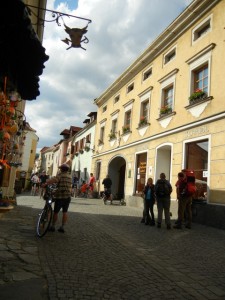
old Durnstein
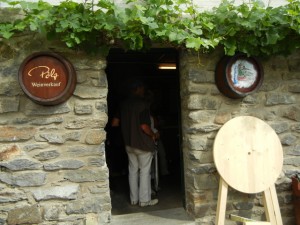
wine tasting
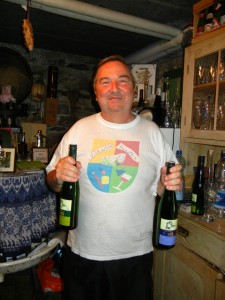
and the winemaker
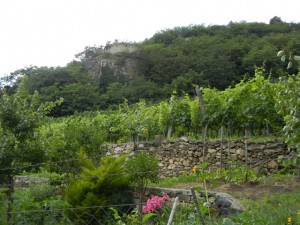
his vineyard (and is that another castle ruin, up there?)
Unfortunately, the boat ride from Dürnstein to Krems was canceled for the afternoon, and it seemed as though the train was not coming either (the office was closed). We found a bus stop, and waited for the bus along with at least 20 other people.
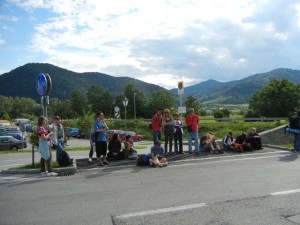
waiting for the bus
We all squeezed on and the bus driver, who knew the schedule for the next train from Krems to Vienna was tight, drove like he was qualifying for the Le Mans, calling out queries about necessary stops along the way. People hollered back, “Ja” or “Nein”! If no one needed to get off, he just sailed right through! We hopped on the train with moments to spare and got off—surprise—at Spittleu in time to see the Hundertwasser thermal plant in full daylight.
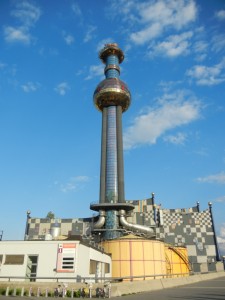
back in Vienna - hundertwasser power plant
Now THIS is blue!
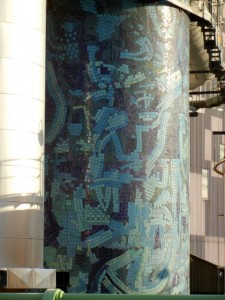
detail of the stack
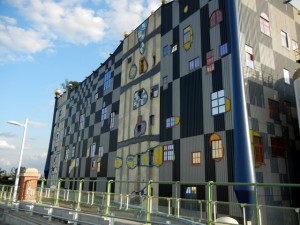
What a day!
Thanks for reading!

